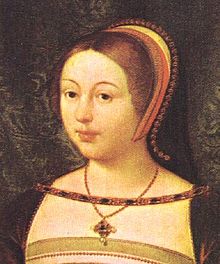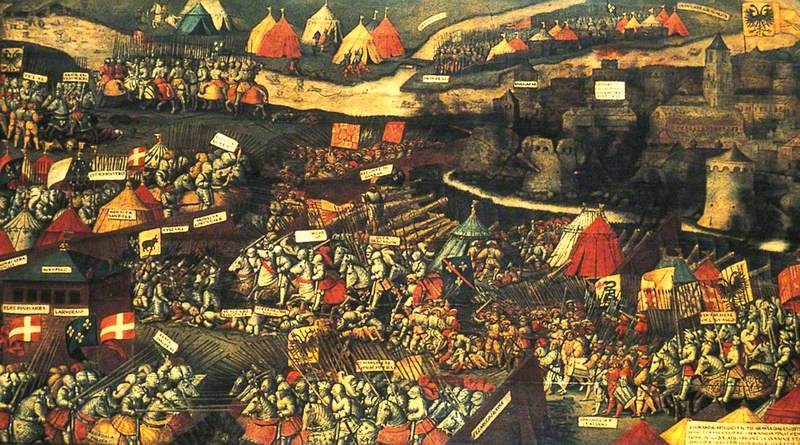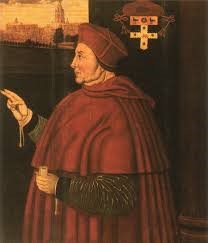James V: Life Story
Chapter 3 : Subjection to Angus (1524 - 1528)
Whilst the nobles, sweetened with English bribes, were prepared to throw off Albany, there was no realistic prospect of James being able to rule unaided. It was ordered by the Estates that Queen Margaret should ‘have the rule of her son’ and that he would have four guardians amongst the lords who would take turns to supervise the King, changing quarterly.

Angus was not happy with this, and attempted in November 1524 to seize control of him, but was repelled from an assault on Edinburgh Castle. James and Margaret then established themselves at Stirling, and Angus and Beaton made some sort of private deal. Nevertheless, the rotation of the King’s guardianship continued, and included a turn for Angus.
Slightly more cordial relations were established with England during 1524, and in December, Henry VIII wrote to Pope Clement VII, asking him to confirm James’ (or rather, Margaret’s) nomination for a bishopric. Henry also wrote to James, thanking him for his ‘good understanding’ of Henry's letters,
‘as proceeding from the fresh wit and great towardness of wisdom which is reported to be in him (James)’.

He went on to assure James that one of his own principal concerns is James’ safety and honour. All the blame for the troubles of the past eleven years were obviously the result of Albany’s machinations and henceforward Henry and James could live in perfect peace (provided James followed his uncle’s advice, of course.)
During 1525, France suffered a major defeat at the hands of the Emperor Charles at the Battle of Pavia, so had little time or inclination to get further involved in Scots affairs. With a weakened ally, and many of the Scots Lords in English pay, the Estates agreed a three-year truce with England in July of 1525, which was eventually ratified in June 1526. The Estates of 1525 consisted of some ten earls, nine senior lords, five lesser lords, eight commissioners for burghs and twenty clergy.

In June 1526, the lord in charge of James, according to the scheme of rotation, was Angus. On 14 th June, James was declared to be of full age. According to Scots law, James could now cancel any grants made during his minority, however, Angus had no intention of letting him wield authority. His plan was to control James, whilst negating any arguments that the King should move to another guardian once Angus’ term ran out. James was furious, but unable to escape from Angus’ clutches.
His anger towards the whole Douglas clan grew during this period, and, as Angus was strongly representing Henry VIII’s interests, the seeds of suspicion between uncle and nephew were sown. A new Privy Council, largely made up of Angus’ supporters was appointed, with himself as Chancellor.
In 1526, Queen Margaret wrote to Henry VIII, saying that James, despite being recognised as of age by the Estates was in ‘thraldom’ to Angus, and had been forced by Angus to write various letters to Henry and the Pope criticising Archbishop Beaton.
James, desperate to escape from Angus, made an agreement with the Earl of Lennox, and a scheme was hatched to rescue the King when he rode with Angus to the Borders, to attempt to punish the notorious reivers, the Armstrongs. Lennox’ ally, Scott of Branxholme mounted an ambush (known as the Battle of Melrose) to rescue James, but Angus had the support of Lord Home’s men, and retained control.
James did not give up, and a further armed confrontation took place at Linlithgow, when Lennox again brought soldiers, but was defeated by Angus, now allied with Arran. During this confrontation, George Douglas told James that they would hang onto his person, even it if meant him being torn in pieces. Lennox was killed, and Arran cried crocodile tears, and then withdrew from Angus’ party. Angus was reconciled to Beaton (at the price of a large bribe) but his brother suspected Beaton’s motives. Angus, according to Henry VIII’s envoy was ‘gentle and hardy, but wants wit.’

In January 1528, James, presumably forced by Angus, wrote to Cardinal Wolsey in England, asking him to request Henry VIII to prevent the return of the Duke of Albany, although the likelihood of Albany wanting to return was small.
